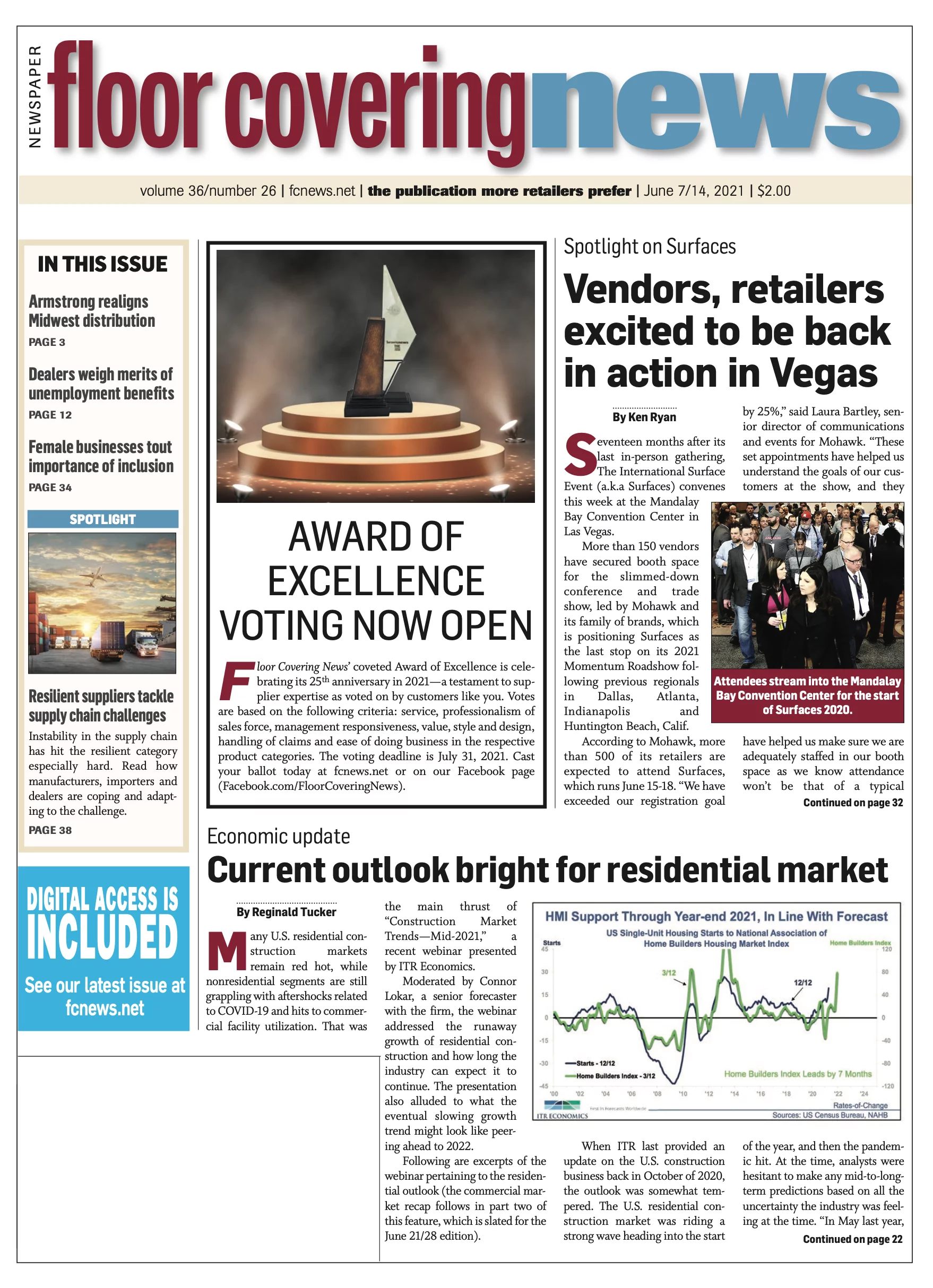 By Megan Salzano In early 2020, millennials officially surpassed baby boomers as the nation’s largest living adult generation at 72.1 million, according to estimates from the U.S. Census Bureau. Two years before that, in 2018, one-in-three American labor force participants (or 35%) became millennials—who remain the largest generation in the U.S. workforce today, according to Pew Research. It’s safe to say, millennials matter when it comes to the world of commerce.
By Megan Salzano In early 2020, millennials officially surpassed baby boomers as the nation’s largest living adult generation at 72.1 million, according to estimates from the U.S. Census Bureau. Two years before that, in 2018, one-in-three American labor force participants (or 35%) became millennials—who remain the largest generation in the U.S. workforce today, according to Pew Research. It’s safe to say, millennials matter when it comes to the world of commerce.
Gen z is also growing in the ranks. This demographic is the youngest (born after 1997), most ethnically diverse and poised to become the largest generation in U.S. history. Gen z is also the first generation of digital natives, meaning they were born without memory of the world without smartphones, making their relationship to digital and social marketing far more advanced and intricate than any generation before them.
These two generations are key demographics for marketers looking to sell their wares. Both millennials and gen z have their own needs and preferences when it comes to large purchases like flooring—and their own timelines, as millennials are the buyers of today while gen z is the buyer of tomorrow influencing the buyer of today. But both are increasingly important to the industry as they continue skirting traditions of generations past and espousing new wants and needs as it relates to purchasing.
“Obviously, there’s a lot of pent-up purchasing demand and we’re seeing gen z and millennials help drive a lot of the new spending right now,” said Jason Dorsey, president and generational expert at the Center for Generational Kinetics, a generations research and consulting firm. “The oldest gen z’ers are only 23 to 24 years old, so they may not be driving floor covering decisions right now, but they are certainly influencing the home décor category because they have influence over social media—which then amplifies and affects other generations.”
So, what does a millennial and gen z buyer want from the brands they interact with and the products they purchase? The simple answer is, they want it all. “They are seeking the best of all worlds—brands that demonstrate green impact, flooring that looks luxurious but is easy to install and clean, along with a company/manufacturer that provides proof of ethical business practices,” Gregg Witt, chief strategy officer, Engage Youth Co., told FCNews.
But in 2021 the answer isn’t really that simple. Even if a brand was able to appeal to these two cohorts successfully, 2020 changed the game. The pandemic has had a lasting effect on how millennials and their younger gen z counterparts spend money, interact with the brands around them and the way in which they want to purchase product.
Impacts of a pandemic: Finance & housing

The most obvious impact of the coronavirus pandemic on consumers was financial. The U.S. economy experienced a deep recession in a matter of months. Country-wide shutdowns closed businesses for several weeks and millions were left unemployed without the opportunity to find work elsewhere.
Gen z was hit the hardest during the early weeks and months of the pandemic, according to a Pew Research Center survey. In March 2020, 50% of the older gen z’ers surveyed reported that they or someone in their household had lost a job or taken a cut in pay because of the coronavirus outbreak. This was significantly higher than the shares of millennials (40%), gen x’ers (36%) and baby boomers (25%) who said the same. In addition, a Pew Research analysis of jobs data showed that young workers were particularly vulnerable to job loss before the coronavirus outbreak as they were overrepre- sented in high-risk service sector industries.
As a result, both gen z and millennials have taken frugality to heart. “There’s a sense of fragility around work, employment and money that did not exist pre-pandemic,” Dorsey explained. “Yes, millennials went through the Great Recession, but nobody in the workforce has ever been through what they just went through. There has been a great awakening to be more thoughtful with money—with every generation but particularly with millennials and gen z who have not had the long-term responsibilities that other generations have had.”
So what does this mean for large-scale purchases like flooring? According to experts, both millennials and gen z now look for the best deal when making purchases. “Millennials are the most cash-strapped adult generation—they are straddled under big student loan debt, so they want to get the best deal,” said Corey Seemiller, associate professor of leadership studies in education and organizations at Wright State University and generation z researcher. “That really matters and at the end of the day that might trump some of [their other purchasing preferences].”
Yet she added that Millennials are primarily driven by experiences and “if they come home every day to carpet they hate, they will change it,” providing opportunity for the industry at large.
When it comes to gen z, Dorsey agreed that “a good deal” is key. “They are more practical with their money than even millennials are, although the pandemic made millennials more aware of their money than they were before,” he explained. “But gen z already is that way because they came of age during the Great Recession and saw their parents struggle. So, they want coupons and discounts and to know that they are getting a good deal, which is very different from what people assume given how young they are.”
Seemiller added, however, that a good deal doesn’t necessarily mean cheap. “They are looking for a good deal, but they do expect to have quality,” she said. “They may get a lesser product because it comes from a brand they stand behind, but they won’t give up quality.”

Another major shift post-pandemic surrounds the housing market. The good news is millennials are placing more value in owning a home now than ever before. “We recently did a study that looked at millennial home buyers and sellers and they said owning a home was more important now than pre-pandemic—which is really interesting,” Dorsey observed. “And they also said that owning a home is important for their generation, which I think is important.”
Skyrocketing home prices due to overwhelming demand and limited supply have made new home purchases inaccessible for younger millennials and the gen z cohort. The silver lining is the phenomenon pushed those who already owned homes into significant renovations. “What we saw over the course of the pandemic was that many millennials realized they wanted to improve the homes they were already living in, particularly as home prices grew very quickly,” Dorsey explained. “They decided to double down on their current home with purchases in home improvement like flooring.”
Since these buyers are looking at their homes in terms of “forever,” the products they are choosing to bring into those homes must now tout durability. “Durability is very important because many of them feel like they are now making this as an investment, and they want it to last a long time,” Dorsey said. “So it has to look the part and last a long time, which is interesting because if you go back five to 10 years, many millennials were less interested in durability and more interested in ‘premium’ and ‘exclusivity.’”
Seemiller added that for gen z, stability is paramount and that translates into durability. “Stability in jobs, financials, family—it’s foreseeable that in every area of their life they are looking to pick one thing and stay with it forever. I can see how that mentality can transition into large purchases.”
Impacts of a pandemic: Supply chains, branding, online shopping

What hasn’t changed post-pandemic is the importance these two generations put on authenticity, transparency and environ- mental/social awareness. “Probably one of the most important things [for these generations] is the ethical behavior of the organization [they are purchasing from],” Seemiller explained. “That includes everything from sustainable sourcing to treating their employees fairly to even publicly supporting initiatives that are behind inclusion and social justice.”
One way in which the pandemic had an impact here, experts agree, is how an organization handled layoffs. If a company fired its employees during the pandemic without sincerity and caring, the backlash could be fierce. “I think how [managers] treated employees in this time for many people is more real and relevant given they can identify with that impact right now,” Dorsey said.
The environmental ele- ment, however, is more of a long-term preference as it has always been of upmost importance to these cohorts. It was also put under a microscope during the months of shutdowns and immediately following when the impact of emissions could be easily seen. “Gen z is much more attuned to being anti-plastic, whereas millennials are whole heartedly environmentalists,” Seemiller noted. “Gen z is very particular about plastics and waste—it’s not just about what the product is made out of but where you’re putting your waste, how you’re polluting the environment.”
Dorsey added that if a company can’t make the elements of their product recyclable “then you want to have some sort of a program that shows you’re offsetting your impact on the environment to prove you’re still having a positive impact.”
When it comes to transparency, branding is a window into a company’s ideals, and marketers need to take heed. “Lifestyle branding matters to this generation and that’s everything from influencers to the lifestyle imagery of who bought it and who’s using it,” Dorsey explained. “A big opportunity in floor coverings is to showcase more diversity. We know that homebuyers are more diverse than ever before, and we want to make sure we are celebrating that through the messaging we are delivering.”
Dorsey added that these generations will find out a brand’s truth regardless of whether or not they sell direct, making branding and online reputation more important than ever before. “Gen z is not afraid to go online and see what they can find out about you—whether they are at a showroom, big box retailer or talking to a contractor or even a realtor. [Suppliers] have to know that these generations might not start [online] but they will go there as they go through their customer journey—and what they find will have a big impact.”
Last but not least, a major shift in purchasing preferences is a much greater reliance on online shopping vs. in-store purchasing. “We have found most recently that younger adult generations have further shifted their preference away from in-store shopping and that even when life goes back to normal, issues like long lines and crowds will remain deterrents,” Witt explained. “More than half of young adult shoppers, 30% of gen z and 36% of millennials, plan to shop in physical stores less than before.”
He added that these two groups have decided that e-commerce is more enticing than ever, with 28% of gen z’ers and 24% of millennials noting they will likely shop online more than before. “Their move toward online shopping highlights important elements of the experience that retailers can focus on when looking to improve their own customer journeys. Both groups cited convenience and price comparison as the top two benefits of online shopping. They want to have the online journey become even more convenient, with better fit technology and better shipping options.”

